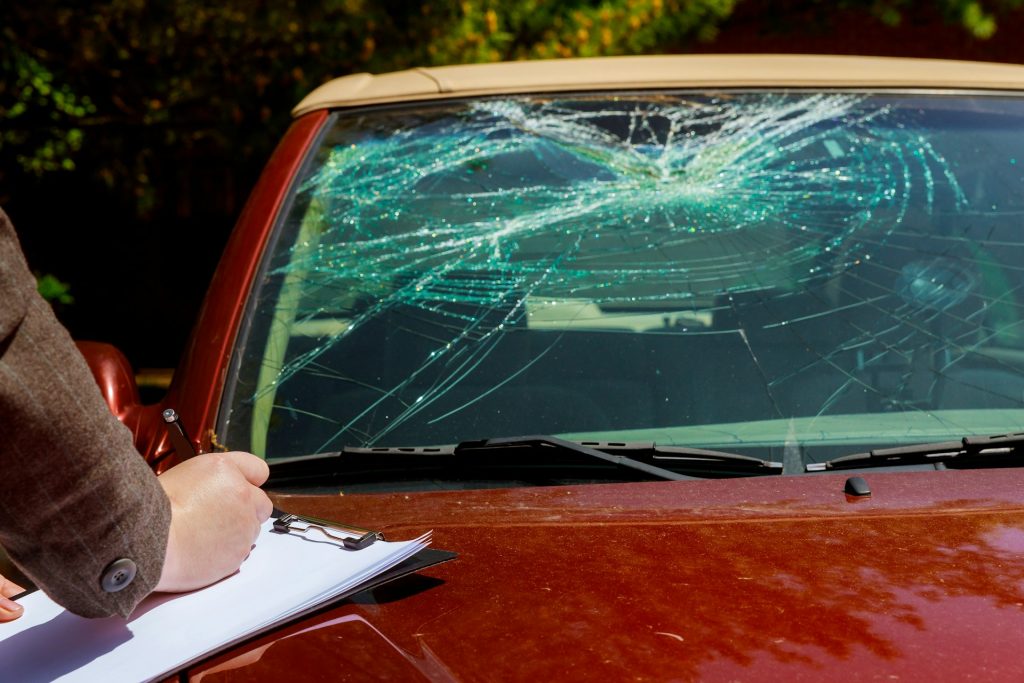Buying a salvage title car can be a tempting option for those looking to save money on their next vehicle purchase. These cars often come at significantly lower prices than their clean title counterparts. However, this discount comes with its own set of challenges and considerations. This article by A Better Bid will explore what a salvage title is, the types of damage that can lead to a car being branded as such, and the differences between salvage and rebuilt titles. We’ll also weigh the pros and cons, discuss the legal, financing, insurance, and resale aspects, and provide guidance on how to navigate the process of buying a salvage title vehicle.
Table of Content
- What Is a Salvage Title?
- Different Kinds of Damage
- Salvage Title vs Rebuilt Title
- Pros and Cons of Buying a Salvage Title Car
- What Legal Risks Do You Have If You Buy a Car with a Salvage Title?
- Financing, Insurance, and Resale
- How to Buy a Car with Salvage History
- Summary
- FAQ
What Is a Salvage Title?
A salvage title is issued to a car that an insurance company has deemed a total loss. This designation means that the cost to repair the car exceeds a certain percentage of its market value, a threshold that varies by state. Salvage titles indicate that the vehicle has sustained significant damage from an accident, flood, or other events.
Despite these drawbacks, purchasing salvage vehicles can appeal to those looking to dive into the used car market while saving money. However, buyers should be cautious, as the branded title of such vehicles often carries the stigma of past damages, potentially complicating future resale or trade-in endeavors. The same vehicle, once repaired, receives a new lease on life but not without inherent major risks. Understanding the history and condition of salvage vehicles is crucial for buyers who aim to capitalize on the lower initial costs without compromising on safety and reliability. This approach to saving money necessitates a thorough assessment to mitigate the major risks associated with owning a vehicle that has been previously deemed a total loss.
Different Kinds of Damage

Salvage title vehicles can have a wide range of damage, from flood and hail damage to extensive damage from a major accident. While some cars may require only minor repairs, others may have suffered from extensive damage that affects their structural integrity.
Salvage title vehicles can exhibit a spectrum of impairments, from the more obvious signs of flood damage, which may compromise electrical systems and foster mold growth, to the subtler, yet equally problematic hail damage that can mar a vehicle’s exterior. In addition to these, vehicles might also bear the scars of collisions that necessitate not just cosmetic fixes but also significant structural repairs to ensure safety. Some cars, while appearing minimally affected on the surface, could have hidden issues like frame damage or compromised safety features, which are not immediately apparent. Each type of damage carries its own set of challenges and repair requirements, affecting the overall integrity and future performance of the vehicle. Understanding the specific nature and extent of damage is crucial for anyone considering the purchase of a salvage title used car, as it directly influences the feasibility of restoration and the potential for future reliability.
Salvage Title vs Rebuilt Title

There’s a crucial difference between a salvage title and a rebuilt title. A salvage title car has not been repaired and is not roadworthy. In contrast, a rebuilt title is given to a previously salvaged vehicle that has been repaired and passed a safety inspection. Rebuilt titles indicate that the car is again fit for the road, though it once had a branded title.
After the repair process, a vehicle that once had a salvage title can be rebranded with a restored title, indicating it has been reconstructed and deemed safe for the road by motor vehicle authorities. This transition from a salvage certificate to a previously salvaged title, and eventually to a reconstructed title, is significant for anyone looking to buy a car with a history of significant damage. The quality of repairs is a critical factor in this transformation, as it ensures that the vehicle meets safety standards and operates reliably for the new owner. The issuance of a rebuilt or reconstructed title signifies that the vehicle has undergone thorough and quality repairs, passing all necessary inspections to be considered roadworthy again. This rigorous process ensures that vehicles with a previously salvaged title are safe, functional, and ready for a new chapter on the road.
Pros and Cons of Buying a Salvage Title Car
The main advantage of buying a salvage title car is the potential to save money. These vehicles are often sold at a fraction of the market value of the same model with a clean title. However, the downsides include potential safety concerns, difficulty in securing financing and insurance, and a lower resale value.
Moreover, purchasing from a private party may add layers of complexity in verifying the vehicle’s history and the quality of car parts used during repairs, which can significantly affect the actual value of the vehicle. A new branded title, such as a rebuilt or reconstructed title, can reassure buyers about the legality and safety of buying a car that has been salvaged. Yet, the stigma attached to a car title with a salvage history can deter potential buyers and diminish its appeal in the marketplace. This perception can lead to challenges in selling the vehicle in the future, as prospective buyers may be wary of the vehicle’s past and potential hidden issues, despite the savings and repairs made. The decision to purchase such a car should be weighed carefully, considering both the immediate financial benefits and the long-term implications of owning a vehicle with a salvage history.
What Legal Risks Do You Have If You Buy a Car with a Salvage Title?

Purchasing a salvage title vehicle comes with legal risks, including issues with title status transparency and the potential for undisclosed damage. Buyers need to conduct thorough research, including obtaining a vehicle history report, to mitigate these risks.
Moreover, when buying a car that has been labeled as a salvage vehicle, there’s the challenge of navigating varying state regulations concerning salvage title cars. This complexity can lead to unexpected legal hurdles, especially if the vehicle receives a junk title in one state but is considered eligible for restoration in another. Such discrepancies can affect the legality of the vehicle’s status and its roadworthiness. Additionally, the process of buying a car with a salvage title may expose buyers to the risk of fraud, with sellers potentially omitting critical information about the extent of damage or the quality of repairs. Buyers must verify the accuracy of the car’s reported condition and ensure that all repairs are documented and up to the standards required for a salvage or vandalized vehicle to be safely and legally driven on public roads. This diligence is essential not only for securing the safety and legality of the vehicle but also for protecting the buyer’s investment in the car.
Financing, Insurance, and Resale
Securing an auto loan for a salvage title car can be challenging, as many lenders view them as risky investments. Similarly, finding affordable car insurance can be difficult, with many insurers only offering liability coverage. The resale of a salvage title vehicle can also be problematic, as its history can significantly reduce its market value.
In some cases, buyers may turn to a personal loan as an alternative financing option, given the reluctance of banks to provide a car loan for salvaged vehicles. This approach, however, often comes with higher interest rates, impacting personal finance decisions. Furthermore, the limited insurance coverage options available for these vehicles, typically restricted to liability insurance, leave owners without protection against theft, vandalism, or further damage to the vehicle. This lack of comprehensive coverage is particularly concerning for vehicles with a history of being a stolen vehicle, as it raises the risk profile even further. These financial and insurance challenges underscore the importance of thoroughly evaluating the long-term costs and risks associated with owning a salvaged vehicle. Buyers must weigh these factors carefully against the potential savings to make an informed decision that aligns with their personal finance goals and risk tolerance.
How to Buy a Car with Salvage History
To buy a salvage title car, start by researching the car’s history thoroughly through vehicle history reports. Inspect the car carefully, preferably with a trusted body shop or repair shop, to assess the extent of damage and quality of repairs. It’s also wise to understand the insurance and financing options upfront.
Additionally, visiting an auction house that specializes in salvage titles can offer potential buyers a wide selection of salvage title cars, allowing for a firsthand look at the variety and condition of available vehicles. This step can be crucial in finding a car that meets specific needs and budget constraints. Buyers need to engage directly with the seller, whether it’s an insurance company offloading a totaled vehicle or a private seller with a rebuilt salvage title car, to gather as much information as possible about the vehicle’s history and the nature of its damages. This direct interaction can also provide insights into the vehicle’s potential for insurance coverage and the likelihood of future claims. Understanding the full scope of repairs, the reliability of the car post-repair, and any warranties offered can help buyers make an informed decision when considering the purchase of a vehicle with a salvage history.
Summary
While buying a salvage title car can offer significant savings, it’s not without its challenges. Potential buyers should weigh the pros and cons, consider the legal, financing, and insurance implications, and proceed with caution. With due diligence, purchasing a salvage title vehicle can be a viable option for some buyers. Thorough research and careful checks are essential. Knowing the vehicle’s past and repair quality helps decide if the savings are worth the risks.
![]() FAQ
FAQ
Show more
How Do You Calculate the Value of a Salvage Car?
The value of a salvage car is typically significantly lower than that of a similar car with a clean title. To calculate its value, consider the cost of repairs, the car’s current condition, and comparable sales of salvage-titled cars. Deducting the estimated repair costs from the market value of the same model with a clean title can provide a rough estimate.
Can You Drive a Salvage Title Car?
No, you cannot legally drive a salvage title car until it has been repaired, inspected, and issued a rebuilt title. The process varies by state but generally involves major repairs, a thorough safety inspection, and sometimes, emissions testing.
How Do I Get a Salvage Title Cleared?
To clear a salvage title, you must repair the vehicle to a roadworthy condition, inspect it by the appropriate state agency, and submit the required documentation, including original repair records. If it passes inspection, the state will issue a rebuilt title, indicating it’s safe for the road.
Recommended Articles
:format(webp)/vulcan.abetter.bid%2Fwp-content%2Fuploads%2F2023%2F07%2Froger-starnes-sr-d4KW_XDfCtU-unsplash.jpg)

:format(webp)/vulcan.abetter.bid%2Fwp-content%2Fuploads%2F2024%2F02%2Fjakub-nawrot-3FYqzBCSLHQ-unsplash.jpg)
:format(webp)/vulcan.abetter.bid%2Fwp-content%2Fuploads%2F2022%2F10%2F2022-10-05-11.30.40-150x150.jpg)
 FAQ
FAQ :format(webp)/vulcan.abetter.bid%2Fwp-content%2Fuploads%2F2024%2F03%2Fartem-beliaikin-vAh9TyyI7wM-unsplash.jpg)
:format(webp)/vulcan.abetter.bid%2Fwp-content%2Fuploads%2F2022%2F10%2F2022-10-05-11.31.58-150x150.jpg)
:format(webp)/vulcan.abetter.bid%2Fwp-content%2Fuploads%2F2025%2F12%2Fcopart-vs-manheim-cover-1.png)
:format(webp)/vulcan.abetter.bid%2Fwp-content%2Fuploads%2F2025%2F11%2Fautobidmaster-vs-copart-1.png)
:format(webp)/vulcan.abetter.bid%2Fwp-content%2Fuploads%2F2025%2F11%2Fa-better-bid-vs-autobidmaster.png)

